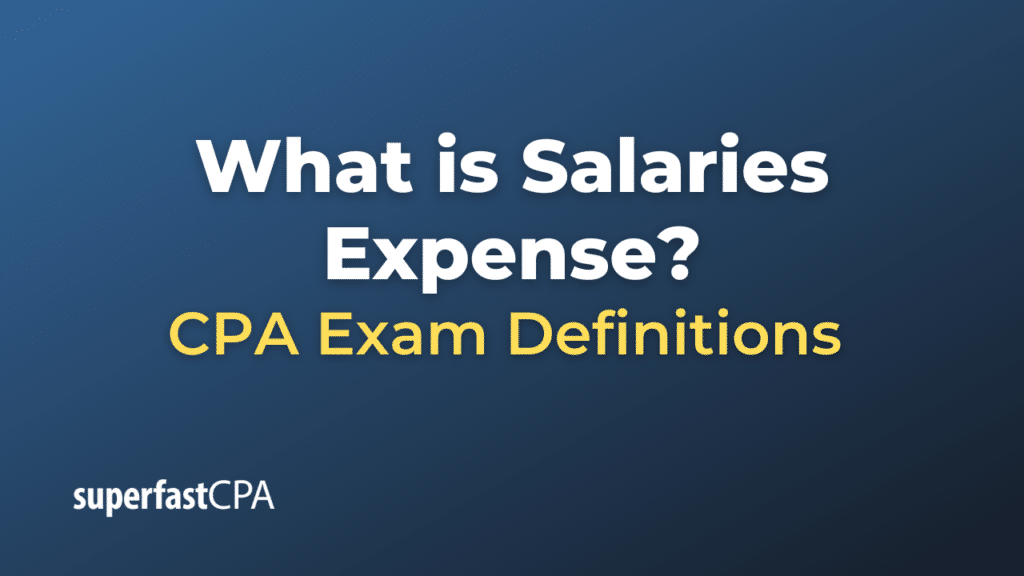Salaries Expense
“Salaries Expense” is an account used in accounting and financial reporting to represent the total amount of wages and salaries paid to employees during a specified accounting period (e.g., a month, quarter, or year). It is an operating expense and is deducted from a company’s revenues to determine its net income.
Here are some key points to understand about Salaries Expense:
- Income Statement Account: Salaries Expense is reported on the income statement, which details a company’s revenues and expenses over a given period.
- Accrual Accounting: In accrual accounting, Salaries Expense is recognized in the period when employees earn their wages, regardless of when the wages are actually paid. For instance, if employees worked the last week of December but will be paid in the first week of January, the Salaries Expense for that last week of December is still recorded in December’s financial statements.
- Matching Principle : The Salaries Expense account follows the matching principle, meaning the expense is recognized in the same period as the revenues to which it directly relates. For instance, the salaries of sales staff would be matched against the sales they made in a particular period.
- Distinct from Other Wage-Related Accounts: While “Salaries Expense” accounts for regular wages and salaries, other payroll-related expenses might have separate accounts. For example:
- Payroll Tax Expense: Represents the employer’s portion of taxes like Social Security and Medicare.
- Benefits Expense: Represents the employer’s costs for providing benefits like health insurance, retirement contributions, etc.
- Commission Expense: Represents payments to sales staff or agents based on sales volume or other metrics.
- Journal Entries: When recording salaries, a typical journal entry might debit (increase) the Salaries Expense account and credit (increase) a liability account like “Salaries Payable” if the salaries have not yet been paid, or “Cash” if they have.
Example of Salaries Expense
Let’s delve into a hypothetical scenario involving a small software development company called “TechSolutions.”
Scenario:
TechSolutions has 5 employees:
- 2 developers each earning $4,000 per month.
- 1 designer earning $3,500 per month.
- 1 project manager earning $4,500 per month.
- 1 administrative assistant earning $2,500 per month.
At the end of March, TechSolutions needs to account for the salaries expense incurred for that month.
Calculations:
- Developers: 2 x $4,000 = $8,000
- Designer: 1 x $3,500 = $3,500
- Project Manager: 1 x $4,500 = $4,500
- Administrative Assistant: 1 x $2,500 = $2,500
Total Salaries Expense for March: $8,000 + $3,500 + $4,500 + $2,500 = $18,500
By the end of March, TechSolutions hasn’t paid its employees yet. The salaries will be paid on April 5. The company would make the following journal entries:
- March 31 (recognizing the expense and the liability):
Debit (Dr.) Salaries Expense: $18,500
Credit (Cr.) Salaries Payable: $18,500 - April 5 (paying the salaries):
Debit (Dr.) Salaries Payable: $18,500
Credit (Cr.) Cash: $18,500
In this example:
- For March, TechSolutions recognizes a total Salaries Expense of $18,500 on its income statement.
- The balance sheet for March 31 would show a liability of $18,500 under Salaries Payable, representing the amount owed to employees.
- When TechSolutions pays its employees on April 5, it no longer has the liability, and its cash balance reduces by the amount of the salaries paid.
This scenario demonstrates how a company recognizes its Salaries Expense and the associated liability until the actual payment is made.













